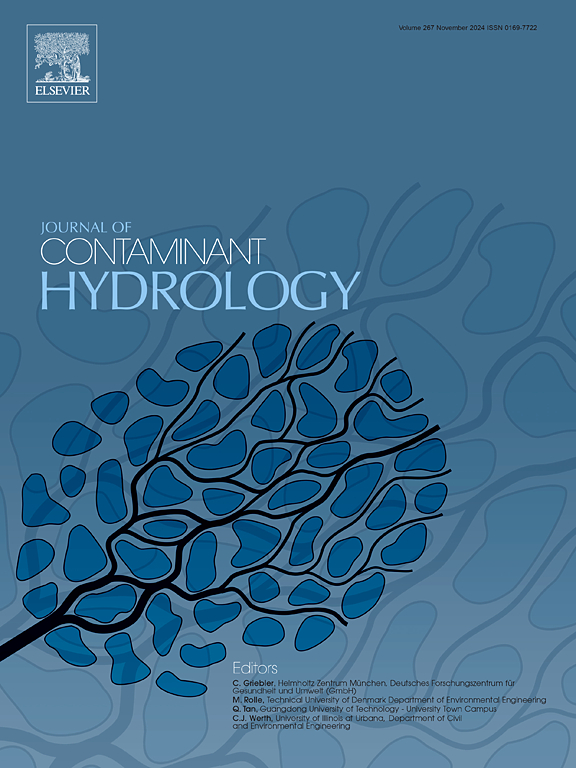追踪台湾东南部淡水环境中的微塑料污染:利用细尾藻、尾藻和多形藻作为微塑料的生物指标
IF 3.5
3区 环境科学与生态学
Q2 ENVIRONMENTAL SCIENCES
引用次数: 0
摘要
水生环境中的微塑料污染水平引起了人们对生物群和环境潜在危害的关注。贻贝由于其固定性生活方式和滤食活动,更容易受到微塑料污染,因此被归类为污染物的完美生物指示器。本研究旨在评估优势淡水贻贝物种软组织中的微塑料污染水平,以了解环境微塑料污染的总体情况。为此,研究了细尾莲(Unio delicatus) (n:49)、末尾莲(Unio Terminalis) (n:31)和多形莲(Dreissena polymorpha) (n:82)软组织中的微塑性存在。包括所有检测标本,平均微塑料丰度为0.6±0.8个/ind, 0.2±0.5个/g ww,发生率为48%。MPs的总体形态特征为纤维状,呈蓝色,尺寸小于500 μm。傅里叶变换红外光谱(FTIR)鉴定出MPs的聚合物类型为聚乙烯(40%)、聚丙烯(47%)和聚苯乙烯(27%)。本研究结果提供了淡水环境中微塑料污染的基线信息,并强调了采取保护措施的必要性。本文章由计算机程序翻译,如有差异,请以英文原文为准。
Tracking the microplastic pollution in the freshwater environments of southeastern Türkiye: Usage of Unio delicatus, Unio Terminalis and Dreissena polymorpha as bioindicators of microplastics
Microplastic (MP) pollution levels in aquatic environments raise concerns regarding the potential harm to biota and the environment. Mussel species are categorized as perfect bioindicator of pollutants due to their sessile lifestyle, and filter-feeding activity that also make them more prone to microplastic contamination. This study was designed to assess microplastic pollution levels in the soft tissues of dominant freshwater mussel species to understand general picture in microplastic contamination of the ambient environment. For that purpose, microplastic presence in the soft tissue of Unio delicatus (n:49), Unio Terminalis (n:31) and Dreissena polymorpha (n:82) was investigated. Including all examined specimens, mean microplastic abundance was found as 0.6 ± 0.8 items/ind, 0.2 ± 0.5 items/g ww with occurrence rate of 48 %. Reflecting global distribution, general morphological characteristics of MPs were fiber shape, blue colored and less than 500 μm in size. Fourier transform infrared (FTIR) spectroscopy identified the polymer type of MPs as polyethylene (40 %), polypropylene (47 %), and polystyrene (27 %). The results obtained in this study provide baseline information regarding microplastic contamination in freshwater environments and emphasize the need of protective measures.
求助全文
通过发布文献求助,成功后即可免费获取论文全文。
去求助
来源期刊

Journal of contaminant hydrology
环境科学-地球科学综合
CiteScore
6.80
自引率
2.80%
发文量
129
审稿时长
68 days
期刊介绍:
The Journal of Contaminant Hydrology is an international journal publishing scientific articles pertaining to the contamination of subsurface water resources. Emphasis is placed on investigations of the physical, chemical, and biological processes influencing the behavior and fate of organic and inorganic contaminants in the unsaturated (vadose) and saturated (groundwater) zones, as well as at groundwater-surface water interfaces. The ecological impacts of contaminants transported both from and to aquifers are of interest. Articles on contamination of surface water only, without a link to groundwater, are out of the scope. Broad latitude is allowed in identifying contaminants of interest, and include legacy and emerging pollutants, nutrients, nanoparticles, pathogenic microorganisms (e.g., bacteria, viruses, protozoa), microplastics, and various constituents associated with energy production (e.g., methane, carbon dioxide, hydrogen sulfide).
The journal''s scope embraces a wide range of topics including: experimental investigations of contaminant sorption, diffusion, transformation, volatilization and transport in the surface and subsurface; characterization of soil and aquifer properties only as they influence contaminant behavior; development and testing of mathematical models of contaminant behaviour; innovative techniques for restoration of contaminated sites; development of new tools or techniques for monitoring the extent of soil and groundwater contamination; transformation of contaminants in the hyporheic zone; effects of contaminants traversing the hyporheic zone on surface water and groundwater ecosystems; subsurface carbon sequestration and/or turnover; and migration of fluids associated with energy production into groundwater.
 求助内容:
求助内容: 应助结果提醒方式:
应助结果提醒方式:


